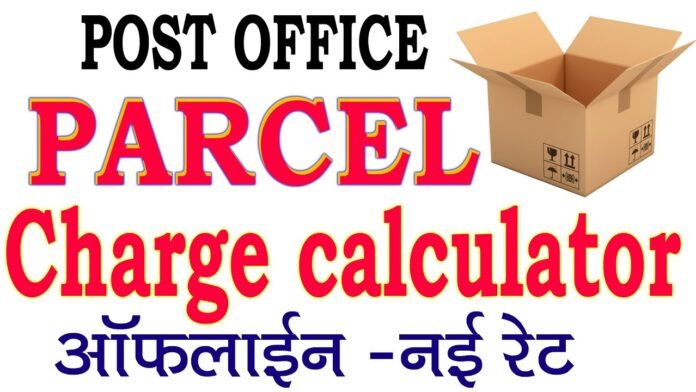Post office parcel charges weights are very important for anyone who wants to send packages safely and affordably. Knowing the correct parcel charges helps you plan your shipping without any extra surprise costs. Whether you are sending gifts, business products, or personal items, understanding how the post office calculates charges based on weight makes your task easier. Every parcel has a specific weight slab, and the charges change as the weight increases. Some parcels also have special rates if they are being sent internationally or require faster delivery. Learning about post office parcel charges weights can save you both time and money. You don’t have to guess or pay extra. Even small mistakes in choosing the correct weight category can make a big difference in the final cost. In this guide, we will explain everything you need to know in simple language, so you can confidently send parcels without any confusion.
How Post Office Parcel Charges Weights Are Calculated
The post office calculates charges based on weight and destination. Domestic parcels are cheaper than international ones. For example, a parcel weighing up to 500 grams will cost less than one that weighs 2 kilograms. Weight slabs are fixed, and the post office updates the rates regularly. You can check the latest rates at the post office or online. If you choose extra services like insurance or speed post, your parcel charges increase. Knowing how post office parcel charges weights work allows you to send parcels without paying extra by mistake.
Weight Slabs and Rates: Understanding Post Office Parcel Charges Weights
Weight slabs are ranges used by the post office to set parcel charges. For example, parcels can be classified as 0–500 grams, 501–1000 grams, 1–2 kg, 2–5 kg, and so on. Each weight slab has its own fixed charge. If your parcel is slightly over a slab limit, you will need to pay the next slab rate. It is important to weigh your parcel correctly before sending. Using a scale at home or the post office can prevent wrong charges. Understanding weight slabs helps both personal and business users plan parcel shipments effectively and budget their costs.
Extra Costs That Can Affect Post Office Parcel Charges Weights
Post office parcel charges weights are not the only cost you pay. Some extra services can add to your bill. Speed post, tracking, insurance, and COD (Cash on Delivery) services all have additional fees. For example, insurance protects your parcel if it gets lost or damaged, but it costs extra. Tracking allows you to see where your parcel is at all times. COD service means the post office collects payment from the recipient on your behalf, and there is a small fee for this service. Knowing these extra costs helps you make smart choices and avoid surprise charges.
Tips to Save Money on Post Office Parcel Charges Weights
There are several ways to save money on post office parcel charges weights. First, always weigh your parcel accurately to avoid paying for a higher slab. Second, choose the right service according to your need. If your parcel is not urgent, normal post is cheaper than speed post. Third, use standard-sized boxes. Odd-shaped or oversized parcels may have extra charges. Fourth, compare domestic and international rates carefully. Finally, avoid last-minute sending, as rush services usually cost more. Following these tips helps both individuals and small business owners save money while sending parcels efficiently.

International Shipping and Post Office Parcel Charges Weights
Sending parcels internationally requires extra attention to post office parcel charges weights. International rates are higher than domestic ones and depend on the destination country. Some countries have restrictions on parcel weight, size, or items that can be sent. Customs duties, taxes, and delivery charges may apply. Always check the destination country rules before sending. If your parcel is heavy, consider dividing it into smaller parcels to reduce charges. International shipping is convenient if you plan carefully and understand post office parcel charges weights for global destinations.
Common Mistakes While Checking Post Office Parcel Charges Weights
Many people make mistakes when sending parcels that increase their costs. A common mistake is underestimating the weight. If your parcel is heavier than expected, you will need to pay the higher slab rate. Another mistake is ignoring extra services. Some people choose COD or insurance without knowing the charges. Oversized parcels are also costly, so always measure your parcel carefully. Not checking the latest post office parcel charges weights online or at the post office can cause overpayment. Avoiding these mistakes helps you send parcels confidently and save money.
How to Track Your Parcel After Knowing Its Charges and Weight
After sending your parcel, tracking it is important. Most post offices provide tracking for speed post and international parcels. Tracking allows you to see the parcel’s journey and estimated delivery time. Knowing post office parcel charges weights beforehand helps you understand the cost versus service received. If there is any delay, you can contact the post office with your tracking number. Businesses benefit greatly from tracking because it builds trust with customers and ensures timely delivery. Tracking also prevents loss and ensures that your parcel reaches safely.
Special Services and Their Impact on Post Office Parcel Charges Weights
Post offices offer special services that impact parcel charges. Speed post is faster than regular mail and has higher charges. Insurance protects your valuable items but costs extra depending on the declared value. COD allows payment collection but adds a service fee. Registered post ensures that the parcel is handled carefully and safely. Knowing these services and their charges helps you decide the best combination of weight and service to save money while ensuring safe delivery. Planning carefully avoids paying unnecessary fees while meeting your delivery needs.
Conclusion
Understanding post office parcel charges weights is essential for anyone sending parcels. Correctly calculating weight, choosing the right service, and considering extra charges help you save time and money. Accurate knowledge prevents mistakes and ensures parcels reach safely. Following tips like weighing parcels correctly, using standard-sized boxes, and tracking your parcel makes the process smooth. International shipments need special attention to rules, weight limits, and charges. By being informed, both personal users and businesses can plan parcel sending efficiently and affordably.
FAQs
Q1: How are post office parcel charges weights calculated?
A: Charges are based on the parcel’s weight and destination. Heavier parcels cost more, and international destinations have higher rates. Extra services like tracking and insurance increase the cost.
Q2: Can I save money on parcel charges?
A: Yes. Weigh your parcel correctly, choose the right service, avoid oversized boxes, and check rates online before sending.
Q3: Are extra services necessary for every parcel?
A: No. Services like speed post, insurance, and COD are optional. Use them only if needed, as they add extra cost.


